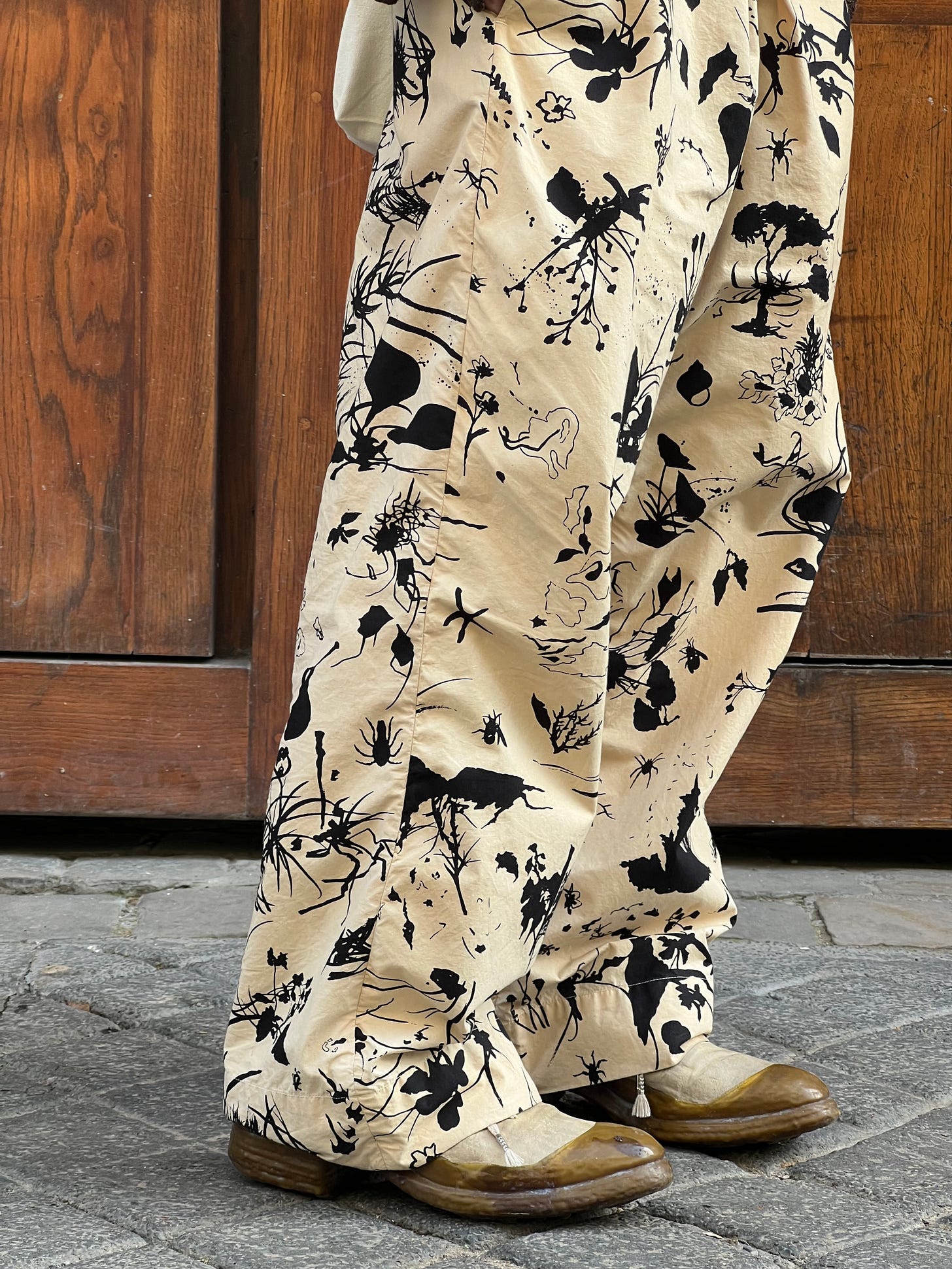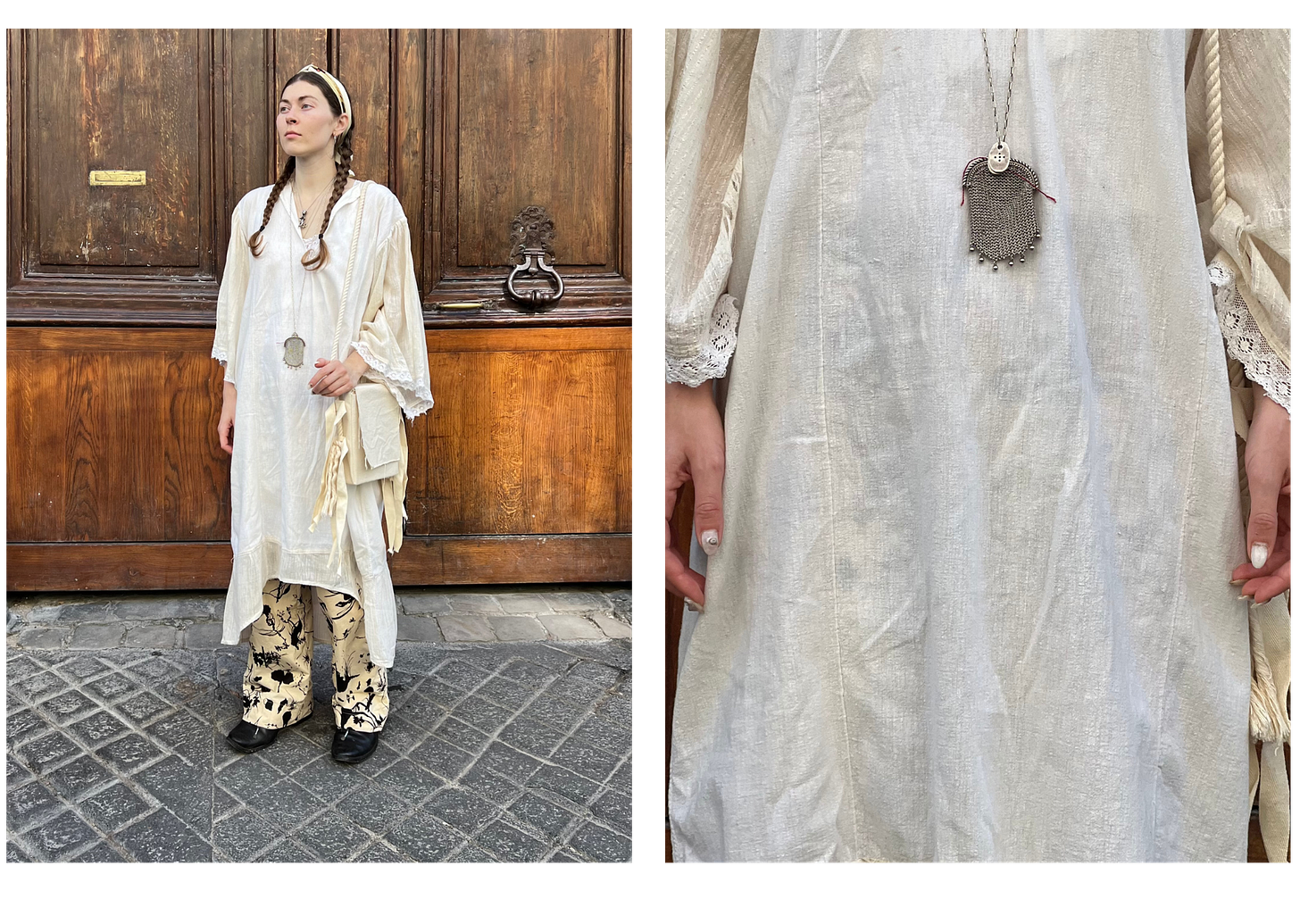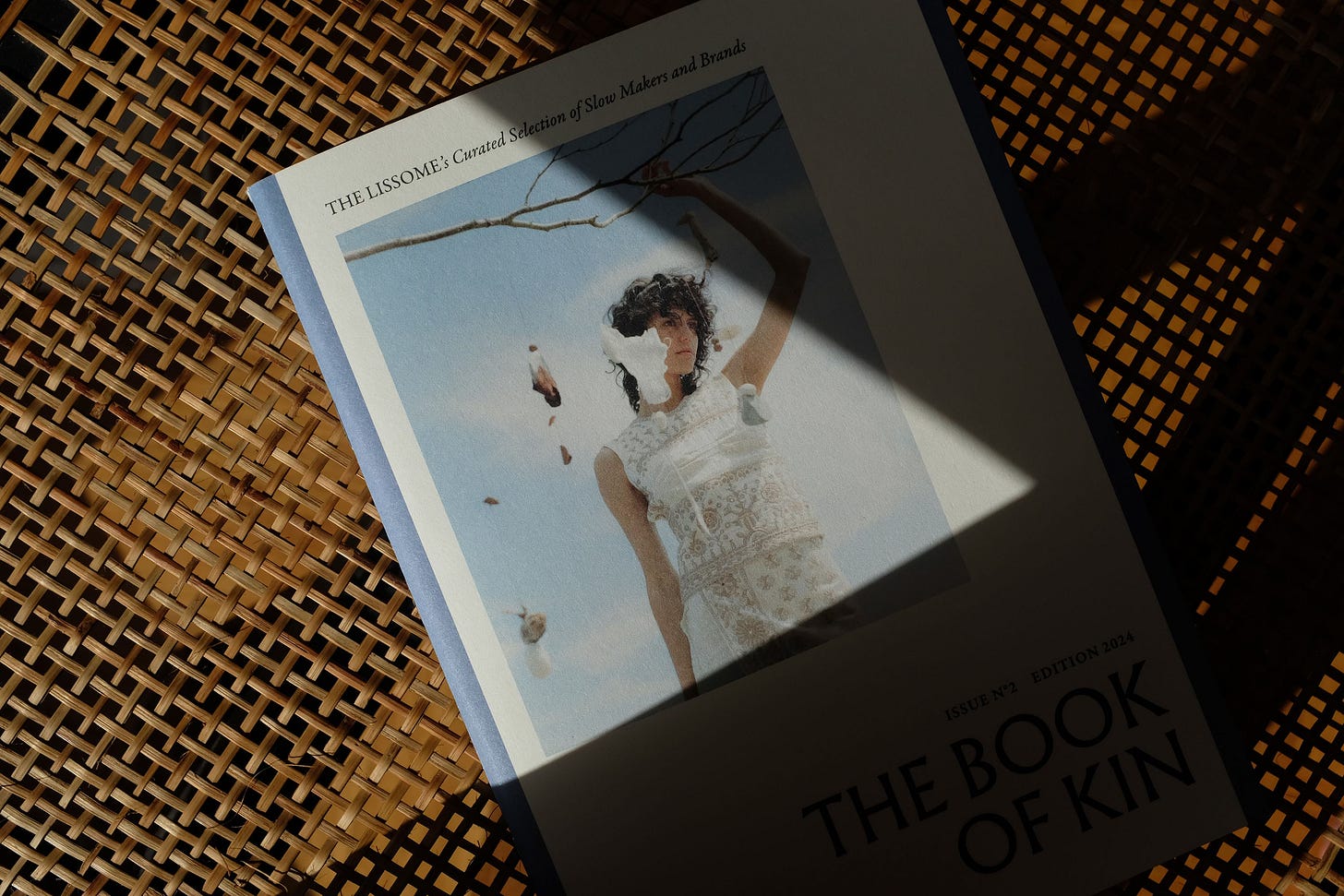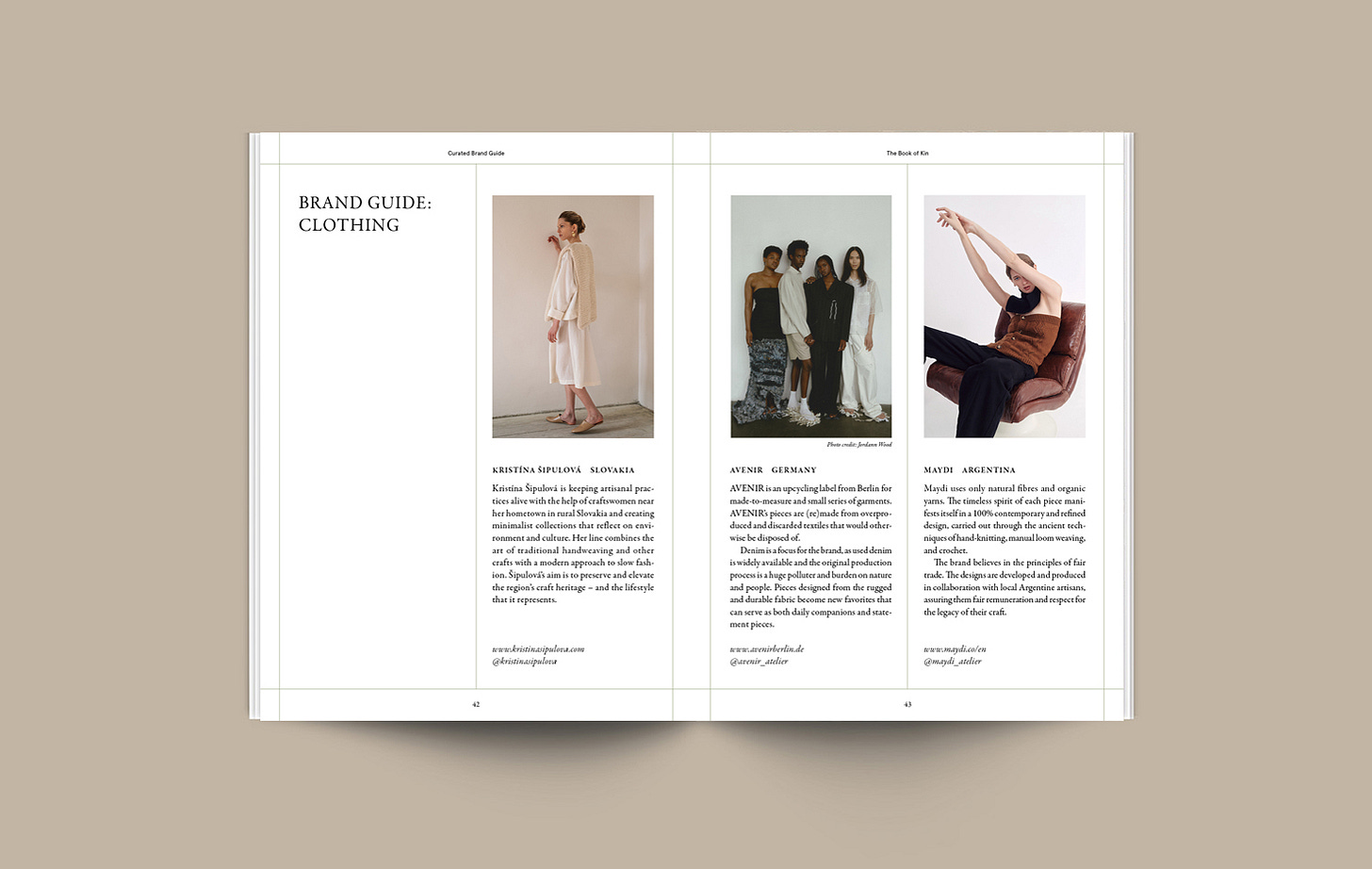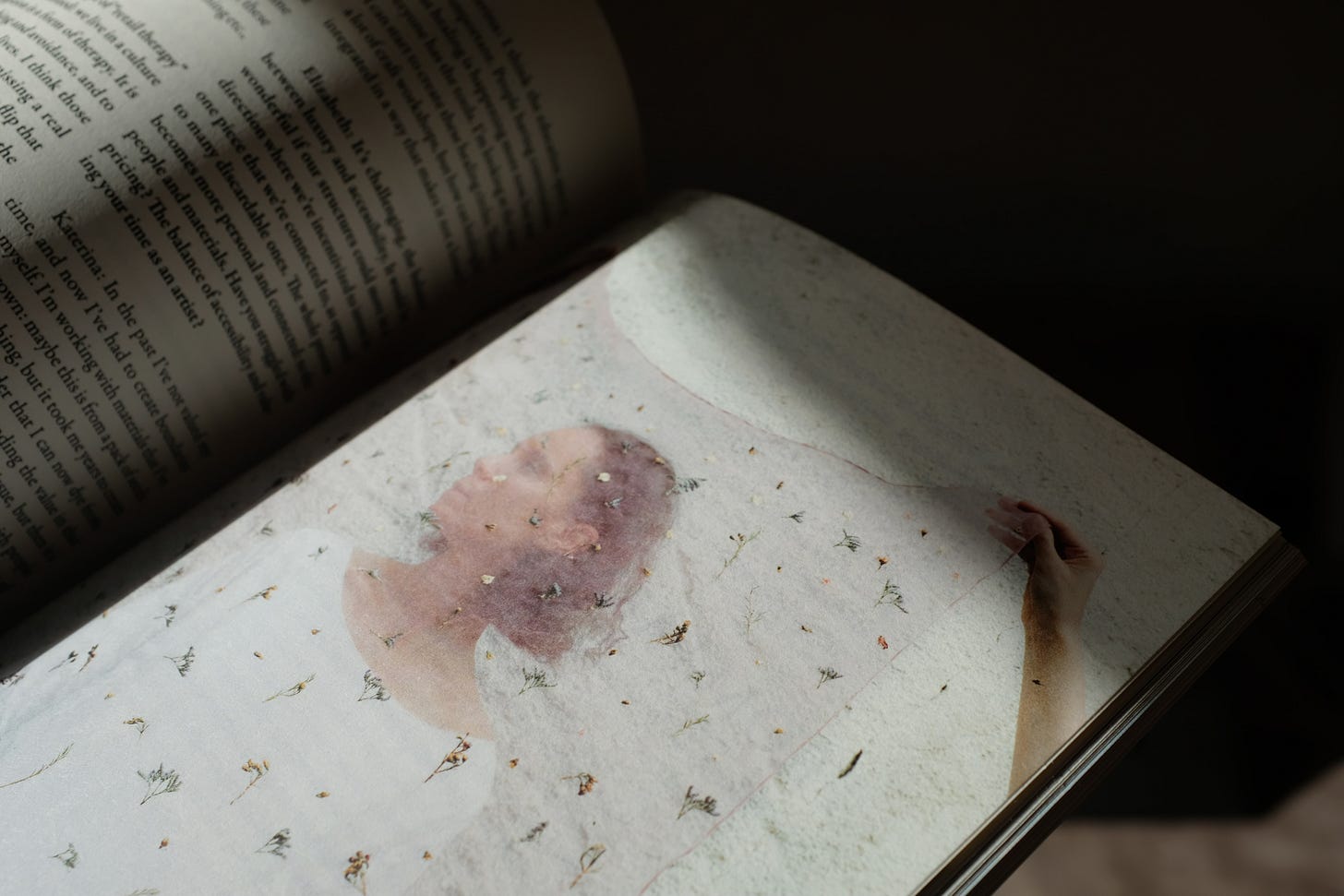Creating Microcosms: From Clothing to the Garden
Inspiring stories of women building and sharing models of how to be self-sustaining.
This space is for sharing inspiration, creating with intention, and becoming part of a community. We’re going deeper with members of The Book of Kin, our curated guide book and online platform of independent designers and makers of all kinds, to get in touch with the stories of the people and processes behind the labels. Each newsletter will include useful tools to guide you through your journey on this material plane, from how to mend a pant seam, to how to cultivate a flourishing garden.
Four Questions with Modern Sewing Co.
– Going Deeper with The Book of Kin Creators:
Starting in her teenage years in the attic, Hetty has always been creating designs and sewing. She’s nerdy about construction details and quality fabrics, but also appreciates the memories and emotions that garments can hold.
When the pandemic hit in 2020 it brought an unexpected pivot to her career. She went from selling fully made clothes to selling patterns and online workshops for people to sew their own clothes at home.
A seamless fit for The Book of Kin, Hetty is featured in this year’s issue. This time, we’re going deeper with some questions about her philosophy, and how her business fits into the larger conversation around sustainability.
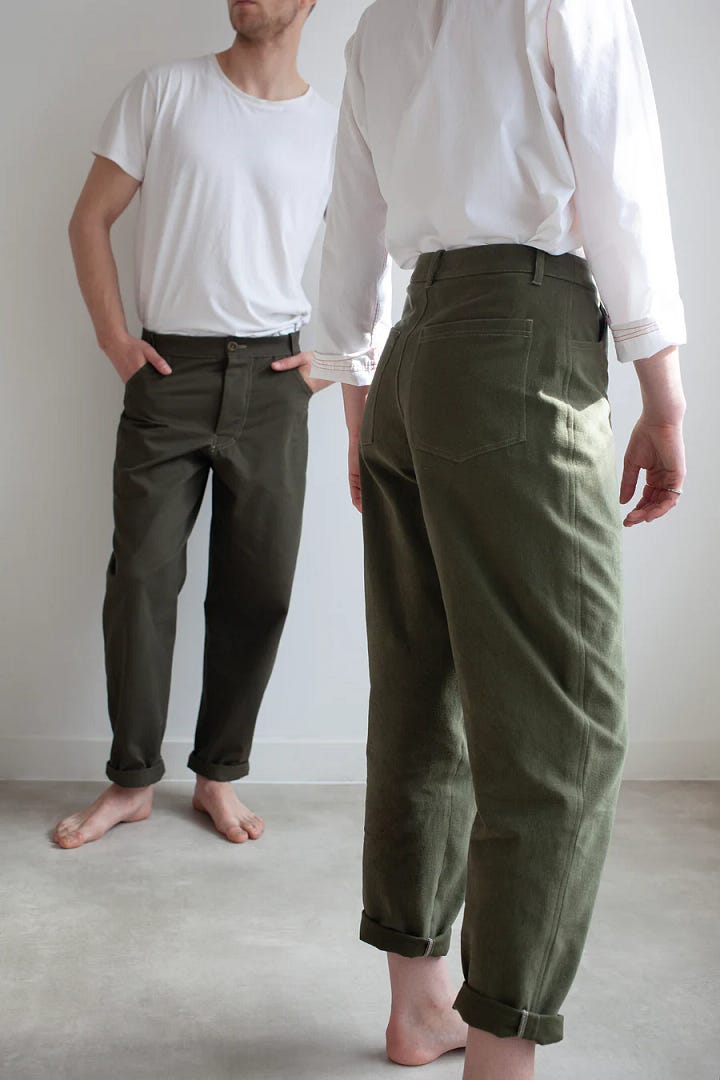
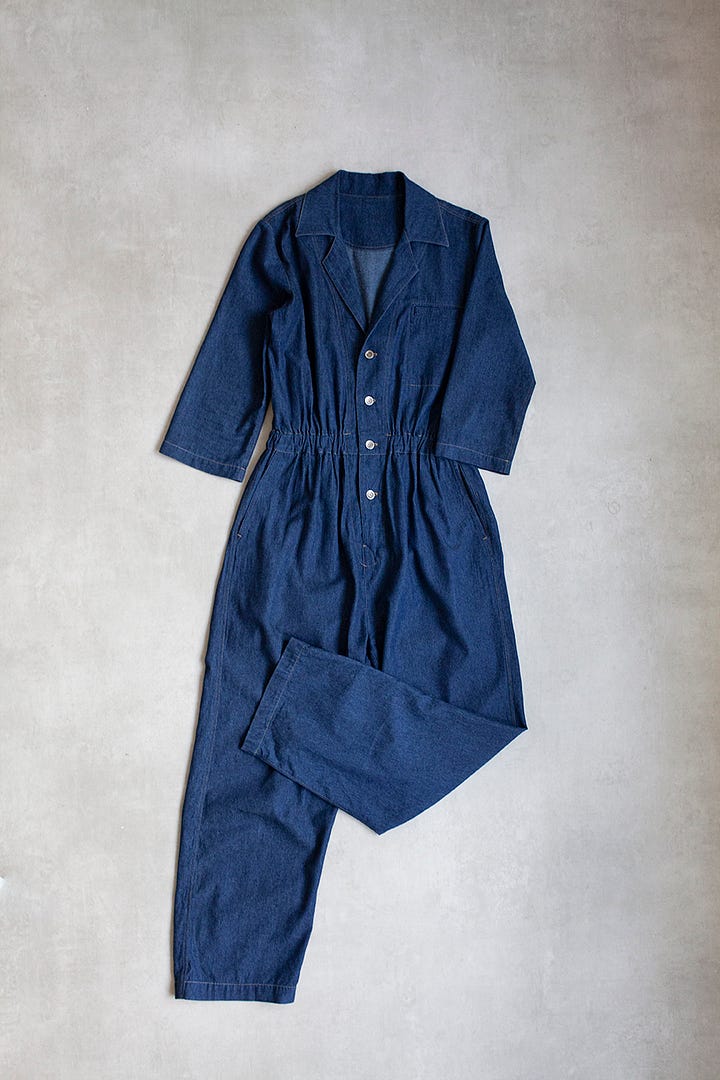
Many brands have a defining moment or story behind their name. What’s the story behind your brand’s name, and how does it connect to your ethos?
Hetty: Our brand name is really quite descriptive and it sums up the mission and the ethos in one. Sewing your own clothes might be seen by many as an old fashion pastime, perhaps out of date and uninteresting. However it might surprise you to know that there is a global movement of people making amazing, fashionable clothes from their own homes, reconnecting with the act of making and reclaiming the garments that clothe them. There are many driving factors to this, from taking an environmental activist stance against fast fashion to taking the time to work with your hands away from the screen and fast paced modern life. It's a way to switch off and make pieces exactly to your taste, giving you a vital creative outlet. And that’s what we're here to do. The Modern Sewing Co. is here to serve the modern way of making your own clothes.
How have you refined your skills over the years?
Hetty: I have been sewing clothes for about 14 years and there are a few things that have helped me to refine my skills. The first is constant practice – that one is self explanatory. The second is continue learning. You’re never too advanced to learn new skills and a couple of years ago I felt I needed to broaden my skills. I enrolled in a tailoring course which changed the pace and focus of my technical skills, slowing everything down and paying much more attention to the tiny details. And the third is changing the perspective of my practice. I used to sew nicely considered garments. But I started to question the value of having another nice over shirt in the world. I started to think much more deeply about what I was making and really lean into the fact that I sew one off garments that don’t need to be reproduced by a factory. When you’re focusing on one piece you can pour everything into it and the result is always something far more outstanding. This has improved the quality of what I produce and it has also become the focus of my business.
“I have been on my own journey with navigating fashion and I have documented and shared my personal changes and approach to making clothes. I think this transparency and honesty is important for building a trusted relationship with my audience and validates my message to people.”
Slow fashion often involves a longer production timeline. How do you manage this aspect of your business, and what benefits do you see in taking your time to create each piece?
Hetty: The beauty of selling patterns and workshops is that I’m not involved in the production of any garment other than my own samples. The production process is entirely in the hands of my customers. For them, the process of making is just as enjoyable as wearing the finished garment. It’s such a positive way to produce clothes and I think there’s a big future in home sewing.
Fashion often reflects cultural shifts and societal values. How do you see your work contributing to larger conversations or movements, whether it’s in fashion or beyond?
Hetty: I think the pandemic brought about a huge shift in values and although it’s shifted again since life has gone back to normal I think the underlying messages are not forgotten. There is an appreciation for crafts and hobbies that feels quite new and exciting and platforms like Instagram and TikTok have helped to fuel the fire. Awareness for sustainability issues and a trend for handcrafted items is changing how the future looks for fashion. I also think more discussions around mental health help to shine a light on what productive, fulfilling hobbies can do for the brain. I hope The Modern Sewing Co. can help this create a swell for continuing to shake things up over the next decade and offer a genuine alternative to high street shopping.
“I think the Modern Sewing Co. encourages people to approach making clothes as an art form and one of the most important parts of this is that it’s 100% achievable through the online workshops we offer. This not only excites and interests people but opens up a whole world of possibilities that they can get involved in. This message is very strong in the brand and I think it has encouraged a lot of people to really find joy in their sewing.”

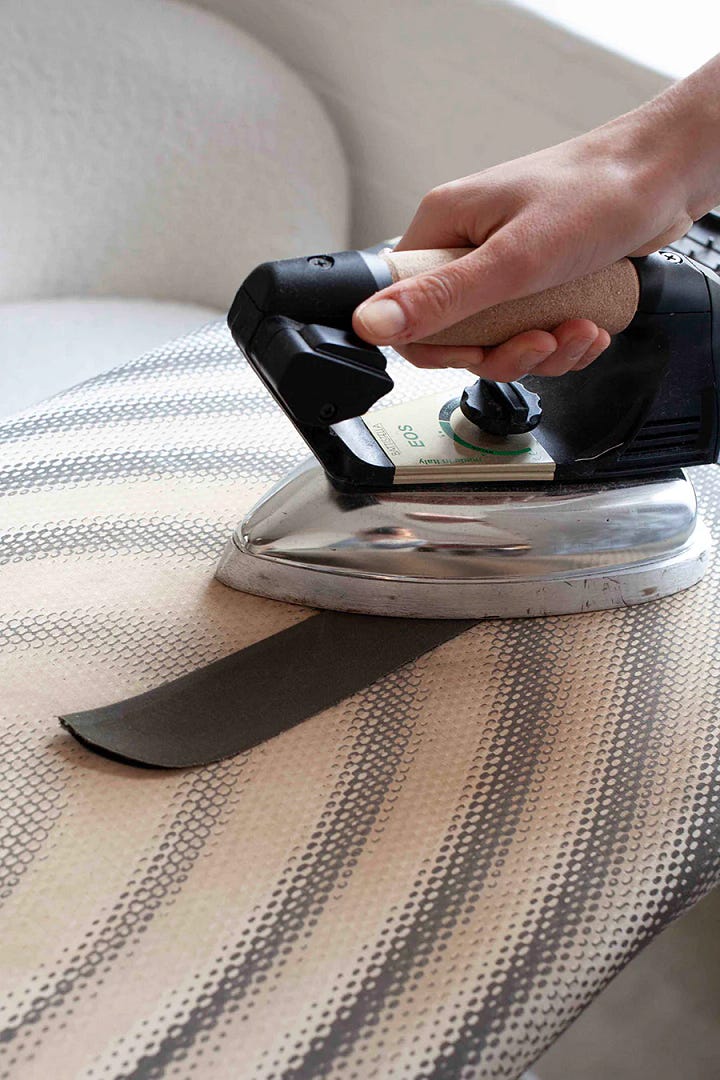
The Modern Sewing Co. / @modern_sewing_co
London, England
Founding Year: 2021
https://modernsewingco.com
Call for Submissions: “One Piece, Three Ways”
The trend cycle pushes us to buy a piece, wear it once, and forget about it. Let’s craft an alternative mode of relating to clothing, shaped by intentionality, care, and creativity. We’re asking: how can one piece be re-invented over and over again, through seasons, gender expressions, moods, and energy levels?
To participate, pick a piece you love and share its story with us (email us via mail@thelissome.com), then create three different stylings of your choosing. Document each outfit with 1-3 photos, and tell us how you styled it. The focus is on slow and vintage pieces: if there is a maker/slow fashion brand you want to highlight, or a vintage archival piece, please tag them. Otherwise, let’s focus on the fabrics and story behind the piece.
John Alexander Skelton Pants Found For A Steal
What: John Alexander Skelton Printed Trousers
Who: Evelina Dimova @evdimova
Where: Paris, France
The Piece: A pair of John Alexander Skelton trousers from his Spring/Summer 2022 collection which I had the chance to purchase at a steal (relative, as far as his pricing – justified for his manufacturing practices – goes) and an embodiment of everything I ask for in the perfect garment: beige w/ a whimsical print in a darker colour.
Look 1:
Sometimes nothing beats a simple outfit featuring all the pillars of coziness: a large pair of trousers, a simple shirt, a cardigan, and a tote bag. The scarf and cardigan, both in my possession for a long time now, are by Paul Harnden, and the shirt is an antique Bulgarian undershirt I bought on a trip back home to Sofia as a part of a two-for-50 deal (spoiler: the dress from the next look is the second part of said deal). Playing off of the beige of the the trousers and scarf, I’ve chosen two pieces of jewellery to complete the outfit – a vintage (~1930’s) miniature knife I found at a flea market here in Paris and a very, very old MA+ shell necklace that most of my friends have dubbed “the dumpling”. The shoes are a very luxurious Christmas gift from my partner, a pair of Carol Christian Poell derbies and the tote bag is one I bought, as I usually do, from a bakery on a recent trip to Amsterdam. (Everything but the shoes and the tote bag is second hand.)
Look 2:
As the weather begins warming up, I begrudgingly shed some layers and replace the top part of my outfit w/ something light. Yet, as no layering is present to play w/, I play w/ the length to create a more complex silhouette. The dress, beautifully falling apart, is an antique Bulgarian underdress usually worn underneath traditional folk costumes – the exact opposite of their lavish red and blue embroideries and gold adornments. Switching up the accessories from the previous look, I’ve opted for one short and one long necklace – my Alice Waese voodoo baby and a Victorian era coin purse fashioned onto an MA+ button necklace, as well as for yet another Paul Harnden scarf, this time transformed into a headband. To complete the look, a white Elena Dawson bag that plays off the white of the dress and a pair of now very beat up Carol Christian Poell derbies that echo the black of the trousers’ print. (Everything but the button necklace is second hand.)
Look 3:
Whenever the weather and leisureliness of the day allow it, I find this onion of a look to be the perfect route to take w/ styling the trousers. In order to create a texturally complex, yet still subtle layered look, I’ve opted for two pieces very close in colour for the top: an oversized waistcoat by “artisanal techwear” brand aenrmous and an almost antique (~1930s) French paysan shirt. Finishing off the look, a pair of Guidi for Uma Wang mules that have long lost their original colour (but whose yellow hue I don’t necessarily mind) and a pop of colour in the form of a small neck tie crocheted for me by a close friend.
Evelina Dimova is an multi-hyphenate: chef, stylist, writer, critic … She focuses all her various expressions around a holistic study of sustainability at the intersection of style, food, heritage, and human oriented politics. Visit her on @evdimova and Evelina’s Substack for more inspiration.
How To: Build a Vegetable Garden
Practical Tools From Craftspeople Around the World
The vlog is brought to you by Eugenia Diaz, who creates beautiful videos about farm to table gardening, seasonal recipes, DIY and building projects for the home.
If you’re looking for more, we’ve just launched our latest The Book of Kin print guide. It’s like a mini magazine, flowing with the themes of our The Lissome print issues.
It contains a carefully curated selection of slow makers and brands alongside interviews, articles and tutorials with and from innovative designers, craft practitioners, researchers and activists who show us how fashion, clothing and textiles can enhance the wellbeing of communities and the natural world.
Our latest edition features interviews with sustainability expert Veronica Bates Kassatly (on greenwashing in fashion), textile artist Katerina Knight (on craft as a pathway to healing), the Fibreshed (on localising our clothing system), a tutorial on silk printing with wild flowers by Paula Delgado of slow clothing brand ound, and a fashion story showcasing slow clothing brands and designers.
Sending much love and see you next month!
Liz + Dörte xx







